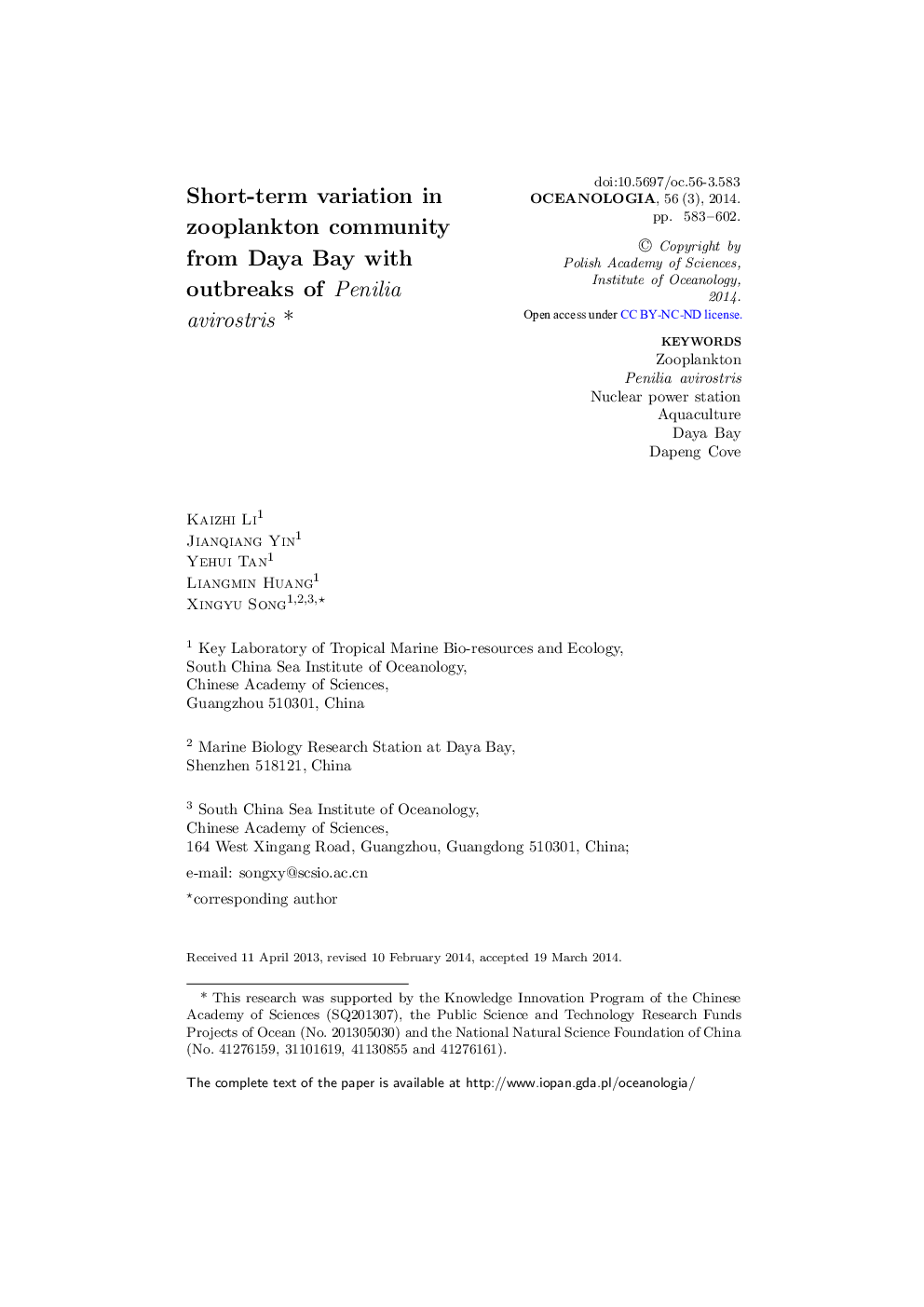| Article ID | Journal | Published Year | Pages | File Type |
|---|---|---|---|---|
| 2069694 | Oceanologia | 2014 | 20 Pages |
The zooplankton community structure in bays fluctuates as a result of anthropogenic activities in such waters. We focused on the short-term variability of a zooplankton community and compared its differences at the outflow of a nuclear power plant (ONPP), in a marine cage-culture area (MCCA) and in unpolluted waters (UW) in the south-west part of Daya Bay from 28 April to 1 June 2001. Environmental factors and zooplankton abundance differed significantly among stations at ONPP, MCCA and UW: high temperatures and a high zooplankton abundance occurred at ONPP, while a high chlorophyll a concentration and a low zooplankton abundance prevailed in MCCA. Statistical analysis revealed that the zooplankton diversity and abundance could be reduced by the activity of the marine cage-culture in a short time. Penilia avirostris made up an important component of the zooplankton in the study area, its abundance ranging widely from 16 to 7267 indiv. m−3 from April to June and peaking at the ONPP outflow. The outbreak of P. avirostris probably resulted from the combined effects of favourable water temperature, food concentration and its parthenogenetic behaviour.
